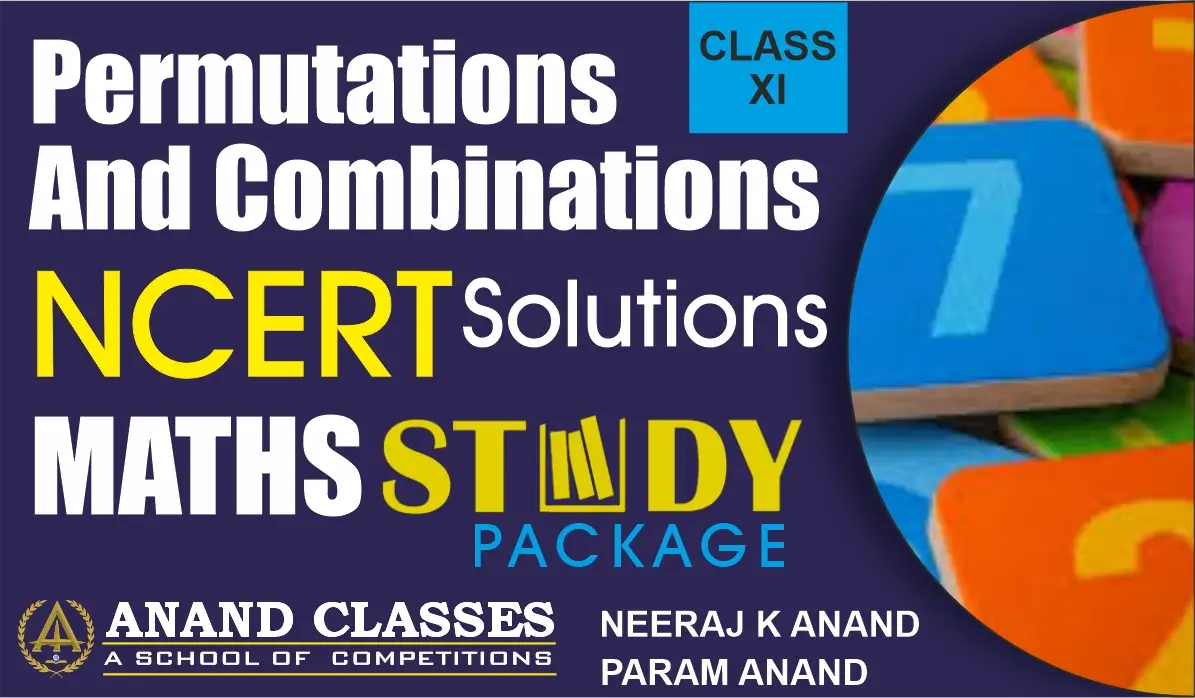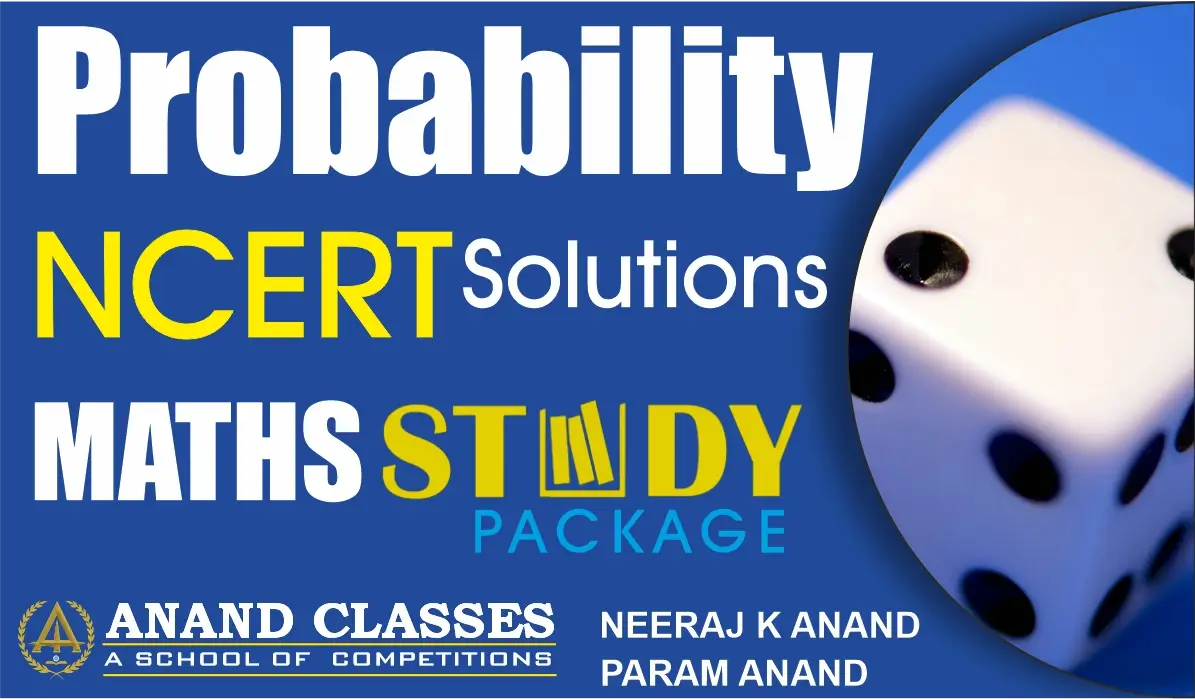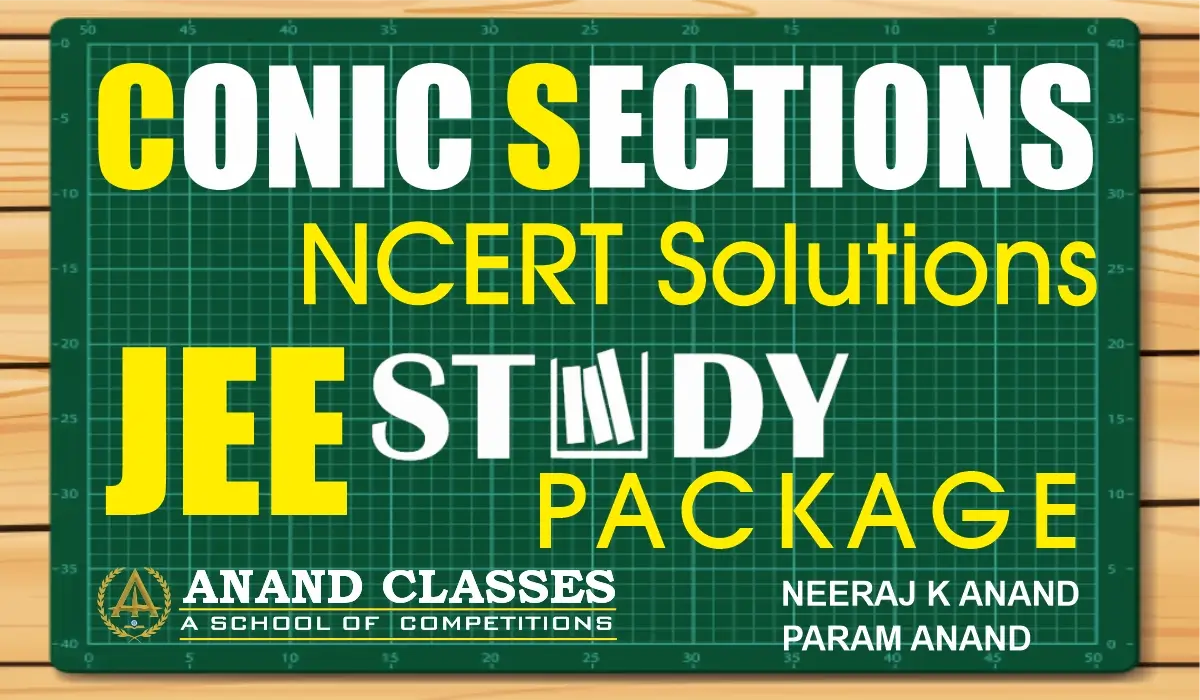Anand Classes provides comprehensive NCERT Solutions for Class 11 Maths Chapter 6 Permutations and Combinations Exercise 6.3, designed to help students master advanced concepts of arrangements and combinations. Each question is solved with clear, step-by-step explanations following the latest CBSE and NCERT guidelines. These solutions make it easier for learners to understand the logic behind permutation and combination formulas and apply them accurately in problem-solving. Click the print button to download study material and notes.
NCERT Question.1 : How many 3-digit numbers can be formed by using the digits 1 to 9 if no digit is repeated?
Solution :
There will be as many 3-digit numbers as there are ways of filling 3 vacant places in succession by the 9 given digits.
This can be done in $,{}^{9}P_{3}=9\times 8\times 7=504$ ways.
∴ The required number of 3-digit numbers = $\boxed{504}$.
NCERT Question.2 : How many 4-digit numbers are there with no digit repeated?
Solution :
We can use 10 digits $0$ to $9$. The number of ways of filling 4 vacant places in succession by the 10 given digits (including $0$) is $,{}^{10}P_{4}$. But these permutations will include those where $0$ is at the thousand’s place. Such numbers are actually 3-digit numbers (for example $0387$) and must be discarded. When $0$ is fixed in the thousand’s place, the remaining 9 digits can be arranged in the remaining 3 places in $,{}^{9}P_{3}$ ways.
∴ The required number of 4-digit numbers
$$
= {}^{10}P_{4} – {}^{9}P_{3}
= 10\times 9\times 8\times 7 – 9\times 8\times 7
= 5040 – 504 = \boxed{4536}.
$$
Second Solution
We know that there are 10 digits $0$ to $9$. The thousand place can be filled in $9$ ways (excluding $0$). Then hundred place can be filled in $9$ ways (including $0$ and excluding the digit placed in thousand place). Ten’s place: $8$ ways. Unit place: $7$ ways.
∴ Required number $=9\times 9\times 8\times 7=4536$.
NCERT Question.3 : How many 3-digit even numbers can be made using the digits 1, 2, 3, 4, 6, 7 if no digit is repeated?
Solution :
For 3-digit even numbers, the unit’s place must be one of $2,4,6$ (3 choices). The remaining 5 digits fill the other two places in $,{}^{5}P_{2}$ ways.
∴ Required number $=3\times {}^{5}P_{2}=3\times 5\times 4=\boxed{60}$.
NCERT Question.4 : Find the number of 4-digit numbers that can be formed using the digits 1, 2, 3, 4, 5 if no digit is repeated. How many of these will be even?
Sol. For 4-digit numbers, arrange 5 digits in 4 places: $,{}^{5}P_{4}=5\times4\times3\times2=120$ ways.
For 4-digit even numbers, the unit’s place is $2$ or $4$ (2 choices). The remaining 4 digits are arranged in the other 3 places in $,{}^{4}P_{3}$ ways.
∴ Required number $=2\times {}^{4}P_{3}=2\times 4\times 3\times 2=\boxed{48}$.
NCERT Question.5 : From a committee of 8 persons, in how many ways can we choose a chairman and a vice chairman assuming one person cannot hold more than one position?
Solution :
Out of 8 persons, a chairman can be chosen in $8$ ways and then a vice chairman in $7$ ways.
∴ By the multiplication rule, the selection can be made in $8\times 7=\boxed{56}$ ways.
Or we can arrange 8 persons in two vacant places in $,{}^{8}P_{2}=8\times 7=56$ ways.
NCERT Question 6 : Find $n$ if $^{n-1}P_{3} : {}^{n}P_{4} = 1 : 9.$
Solution:
We have,
$$
\frac{{}^{n-1}P_{3}}{{}^{n}P_{4}} = \frac{1}{9}
$$
Using the formula $^nP_r = \dfrac{n!}{(n – r)!}$,
$$
\frac{(n – 1)! / (n – 4)!}{n! / (n – 4)!} = \frac{(n – 1)!}{n!} = \frac{1}{n}
$$
Hence,
$$
\frac{1}{n} = \frac{1}{9}
$$
Therefore,
$$
n = 9
$$
Answer: $\boxed{n = 9}$
NCERT Question 7 : Find $r$ if:
(i) $^{5}P_{r} = 2 \times {}^{6}P_{r – 1}$
(ii) $^{5}P_{r} = {}^{6}P_{r – 1}$
Solution:
(i) $^{5}P_{r} = 2 \times {}^{6}P_{r – 1}$
$$
\frac{5!}{(5 – r)!} = 2 \times \frac{6!}{(7 – r)!}
$$
Dividing both sides by $5!$,
$$
\frac{1}{(5 – r)!} = 2 \times \frac{6}{(7 – r)!} = \frac{12}{(7 – r)!}
$$
Now multiply both sides by $(7 – r)!$ and use $(7 – r)! = (7 – r)(6 – r)(5 – r)!$,
$$
(7 – r)(6 – r) = 12
$$
Expanding,
$$
r^2 – 13r + 42 = 12
$$
Simplifying,
$$
r^2 – 13r + 30 = 0
$$
Factoring,
$$
(r – 3)(r – 10) = 0
$$
Thus, $r = 3$ or $r = 10$.
Since $r \leq 5$ (because $^5P_r$ is defined only if $r \leq n$),
we reject $r = 10$.
Answer: $\boxed{r = 3}$
(ii) $^{5}P_{r} = {}^{6}P_{r – 1}$
$$
\frac{5!}{(5 – r)!} = \frac{6!}{(7 – r)!}
$$
Simplifying,
$$
(7 – r)(6 – r) = 6
$$
Expanding,
$$
r^2 – 13r + 42 = 6
$$
Simplifying,
$$
r^2 – 13r + 36 = 0
$$
Factoring,
$$
(r – 4)(r – 9) = 0
$$
So, $r = 4$ or $r = 9$.
Rejecting $r = 9$ (since $r \leq 5$),
Answer: $\boxed{r = 4}$
Explore more on permutations and combinations, factorial simplification, and probability concepts with Anand Classes — perfect for Class 11 Maths, JEE Main, NDA, and CUET preparation.
NCERT Question 8 : How many words, with or without meaning, can be formed using all the letters of the word EQUATION, using each letter exactly once?
Solution
All letters of EQUATION are distinct (8 letters). Number of arrangements using all letters is
$$ {}^{8}P_{8}=8!=8\times7\times6\times5\times4\times3\times2\times1=40320. $$
Answer: ($\boxed{40320}$)
NCERT Question 9 : How many words, with or without meaning, can be made from the letters of the word MONDAY (6 distinct letters), assuming no letter is repeated?
(i) 4 letters are used at a time
(ii) All letters are used at a time
(iii) All letters are used but the first letter is a vowel
Solution :
(i) 4 letters are used at a time
The word MONDAY has 6 distinct letters.
4 letters out of 6 can be arranged in number of ways $ {}^{6}P_{4}$
Number of words =
$$ {}^{6}P_{4}=6\times5\times4\times3=360. $$
(ii) All letters are used at a time
6 letters can be arranged among themselves in $ {}^{6}P_{6}$ ways.
Number of words =
$$ {}^{6}P_{6}=6!=720. $$
(iii) All letters are used but the first letter is a vowel
The first place can be filled by anyone of the two vowels O or A in 2 ways. The remaining 5 letters can be arranged in the remaining 5 places in $ {}^{5}P_{5}$
Vowels available: (O,A) (2 choices). Remaining 5 places filled by the remaining 5 letters in (5!) ways. So the required number of
words are :
$$ \text{Number} = 2\times 5! = 2\times 120 = 240. $$
Answers: (i) ($\boxed{360}$), (ii) ($\boxed{720}), (iii) (\boxed{240}$)
NCERT Question 10 : In how many of the distinct permutations of the letters in MISSISSIPPI do the four I’s not come together?
Solution
Letters in MISSISSIPPI: total (11) letters with multiplicities
- (I): 4 times
- (S): 4 times
- (P): 2 times
- (M): 1 time
Total distinct permutations
$$
\text{Total}=\frac{11!}{4!,4!,2!,1!}=\frac{39916800}{24\cdot24\cdot2}=34650.
$$
Permutations with the four I’s together. Treat the block ((IIII)) as one item. Then we have items: ((IIII),S,S,S,S,P,P,M) — total (8) items with repeats (S) (4 times) and (P) (2 times). Number of arrangements of these 8 items:
$$
\frac{8!}{4!,2!}=\frac{40320}{24\cdot2}=840.
$$
(Inside the I-block the four I’s are identical, so no extra multiplicity.)
Hence, the number of permutations in which the four I’s do not come together = Total number of arrangements – Number of arrangements in which four I’s are together.
Therefore permutations where four I’s do not come together
$$
34650-840=33810.
$$
Answer: ($\boxed{33810}$)
Learn more about permutations, arrangements with repeated elements, and factorial techniques — practice problems and clear solutions from Anand Classes for Class 11 Maths, JEE Main, NDA, and CUET preparation.
NCERT Question 10 : In how many ways can the letters of the word
PERMUTATIONS be arranged if the
(i) words start with P and end with S,
(ii) vowels are all together,
(iii) there are always 4 letters between P and S?
Solution :
The word PERMUTATIONS has 12 letters in all; the letter $T$ occurs twice and all other letters are distinct.
(i) Words that start with $P$ and end with $S$

Fix $P$ in the 1st place and $S$ in the 12th place. The remaining $10$ positions are to be filled by the remaining $10$ letters, with $T$ repeated twice.
Number of arrangements:
$$
\frac{10!}{2!}
$$
Compute:
$$
\frac{10!}{2!}=\frac{3628800}{2}=1814400.
$$
($\boxed{1814400}$)
(ii) All vowels together

Vowels in the word: $E,U,A,I,O$ — five distinct vowels. Treat the block of vowels $(EUAIO)$ as a single object. Then we have this block + the $7$ consonants ${P,R,M,T,T,N,S}$ — total $8$ objects, where $T$ occurs twice.
Number of ways to arrange the $8$ objects (with repeated $T$):
$$
\frac{8!}{2!}.
$$
For each such arrangement the $5$ vowels inside the block can be permuted in $5!$ ways. Hence the required number of words :
$$
\frac{8!}{2!}\times 5!.
$$
Compute:
$$
\frac{8!}{2!}\times 5! = \frac{40320}{2}\times 120 = 20160\times120 = 2419200.
$$
($\boxed{2419200}$)
(iii) There are always 4 letters between $P$ and $S$
If exactly $4$ letters lie between $P$ and $S$, then their positions must be $(1,6), (2,7),dots,(7,12)$ — i.e. $7$ possible ordered position pairs. For each chosen pair of positions the letters $P$ and $S$ can appear in two orders ($P$ left of $S$ or $S$ left of $P$).
Thus, P and S can occupy 2 places out of 12 in 7 different ways. Also P and S can interchange places in 2 ways
The remaining $10$ places are filled by the remaining $10$ letters, with $T$ repeated twice in $\dfrac{10!}{2!}$ ways.
The required number of words :
$$
7 \times 2 \times \dfrac{10!}{2!}.
$$
Compute:
$$
7\times 2\times \dfrac{10!}{2!}=14\times 1814400 = 25401600.
$$
($\boxed{25401600}$)
Learn more about permutations with repetition, block-methods for grouped letters, and position-constraint counting with Anand Classes for Class 11 Maths, JEE Main, NDA, and CUET preparation.


